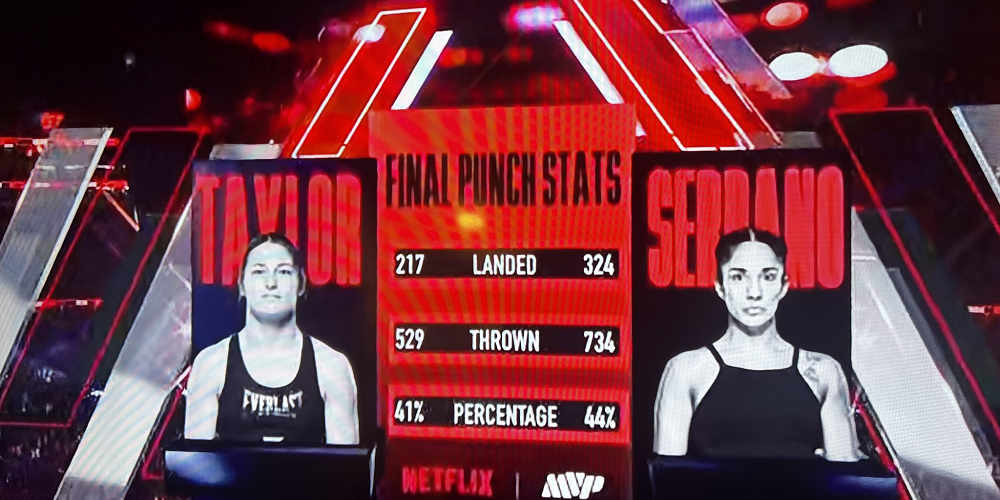Last Friday’s thrilling bout between Katie Taylor and Amanda Serrano, contested for all four super lightweight women’s world titles, captivated audiences and sparked widespread debate over the unanimous decision that crowned the Irish boxer as the victor. (Click here to read our recap.)
While most top international boxing experts defended the judges’ decision, arguing it was a razor-close fight that could have gone either way without controversy, a large number of fans cried foul, believing Amanda Serrano was the clear winner.
This divide is neither surprising nor new. Over the years, I have come to believe that judging a boxing match is far from an exact science. Many rounds inherently involve subjectivity, making it impossible to declare an absolute truth about the winner of a close fight. Instead, there are multiple valid perspectives, each shaped by the criteria of the individual observer.
For this reason, although I scored Friday’s fight in favor of Katie Taylor by one point—just like the official judges—I have no problem accepting the opinion of those who felt the Puerto Rican challenger deserved the victory and the belts. What perplexed me, however, and inspired this article, was one of the main arguments made by those claiming a “robbery”: the alleged undeniable proof provided by Compubox statistics.
Using Compubox to validate one’s opinion on a fight’s scorecards is a bad habit, one I’ve noticed among countless fans and even some industry professionals acting in bad faith. There are several reasons why this should be avoided, and I will outline the most logical and obvious ones here.
To start, some fans, particularly those with a more superficial understanding, make the critical mistake of looking solely at the total punch statistics, comparing the number of punches landed by both fighters throughout the fight. This metric is largely irrelevant when it comes to determining the final score because boxing rounds are scored individually, not cumulatively.
For instance, if a fighter wins six rounds decisively without knockdowns or overwhelming dominance to justify a 10-8 score but loses the other six by the slimmest of margins, the punch stats will likely be skewed heavily in their favor. Yet, the fairest result would still be a 114-114 draw.
Even when breaking down the stats by individual rounds, Compubox remains an inadequate tool for scoring fights due to two key flaws: the lack of information about the quality of punches and the absence of guarantees regarding the data’s accuracy.
The first factor is particularly critical. Anyone with a basic understanding of professional boxing knows that a devastating punch that visibly wobbles the opponent carries significantly more scoring weight than a glancing blow that barely registers. Yet, to Compubox, both punches count equally as “1.”
Many are misled by the term “power punches” in the Compubox tables. Contrary to what one might assume, this category does not refer to “powerful” punches but rather to any non-jab strike. A light, ineffective uppercut during a clinch will be classified as a “power punch,” while a crisp left jab that snaps the opponent’s head back will fall under the “jab” category. In essence, these numbers are a black hole, open to all sorts of interpretations.
The second issue—the reliability of the data—is equally worth considering. While I have no reason to doubt the good faith of those working for Compubox or the dedication of those tasked with tracking punches during a fight, the reality is that this task, which seems straightforward, can be incredibly challenging during chaotic and fast-paced bouts. The margin for error is inevitably high.
I recall watching the Errol Spence Jr. vs. Shawn Porter fight with a close friend who, during one of Porter’s flurries, wondered aloud: “How do they even count these punches? Do they just make a guess?” Indeed, Porter’s lightning-fast combinations were almost impossible to track and categorize accurately in real-time by a human observer. Similarly, in a match as frenetic as Taylor vs. Serrano 2, it’s reasonable to question how many punches Compubox may have missed or miscounted, awarding points for shots that landed on gloves or arms.
The complexity of scoring the clash between these two outstanding athletes at the AT&T Stadium in Arlington is evident from the fact that, despite the three judges arriving at identical final scores, they unanimously agreed on only four out of the twelve rounds. This difficulty was succinctly captured by The Ring editor Douglass Fischer, who posted the following on X (formerly Twitter) after the fight:
“Serrano will always outwork Taylor and land the harder shots, but Katie’s fast hands, combos, and crisp right hands will always catch the judges’ eyes. And 2-minute rounds are PERFECT for Taylor’s style.”
In conclusion, feel free to compile your personal scorecard for the fight and passionately defend your views on who was the moral victor. However, if you want your opinion to carry weight with those who truly understand this sport, please, do not rely on Compubox statistics. Doing so will immediately undermine your argument.

